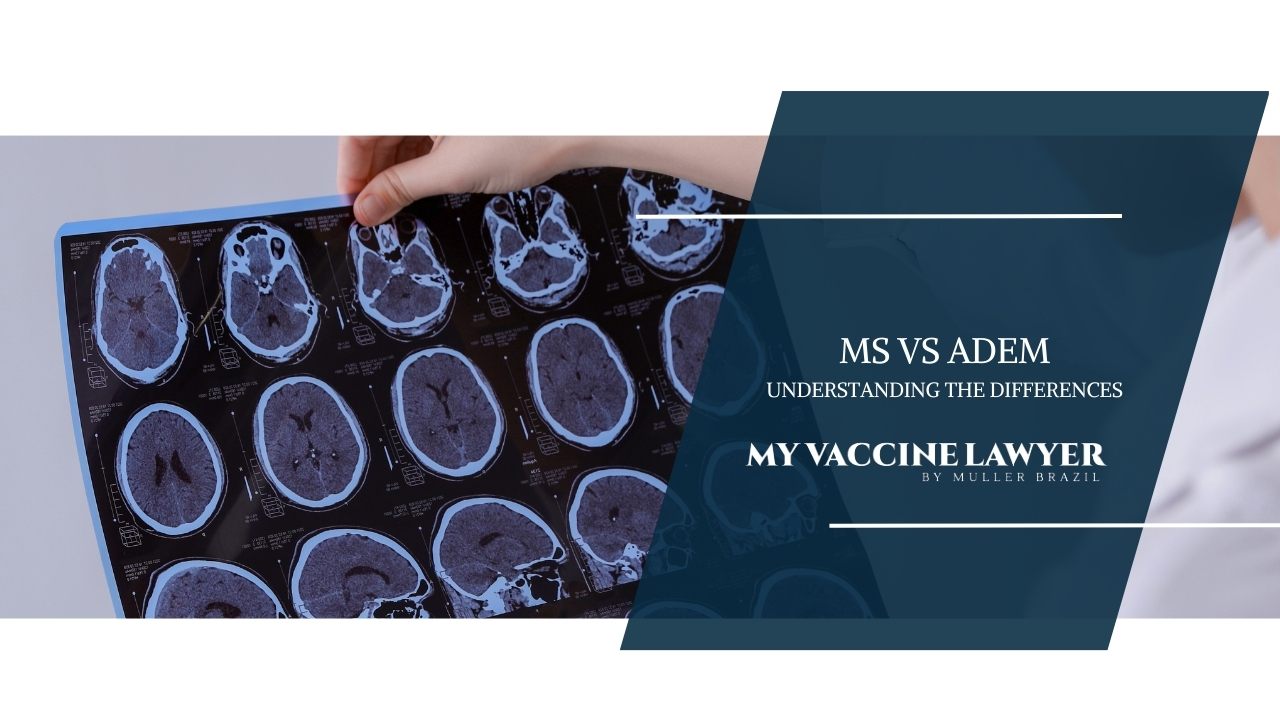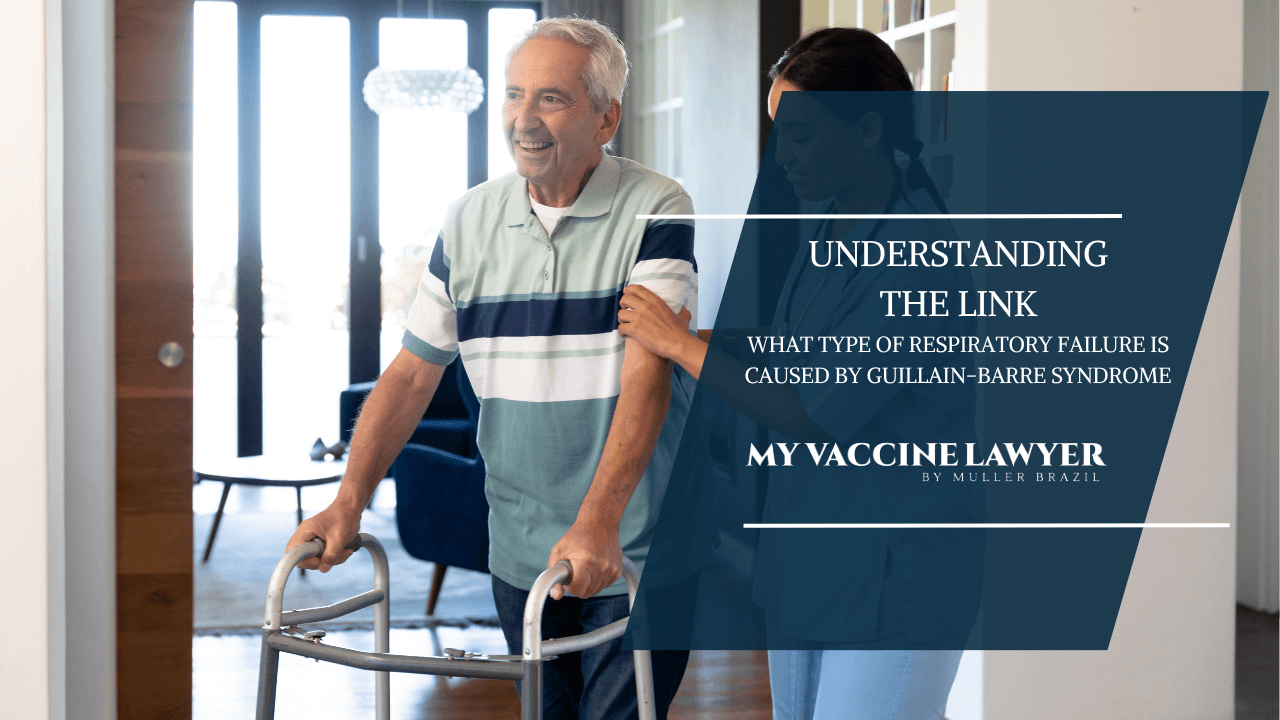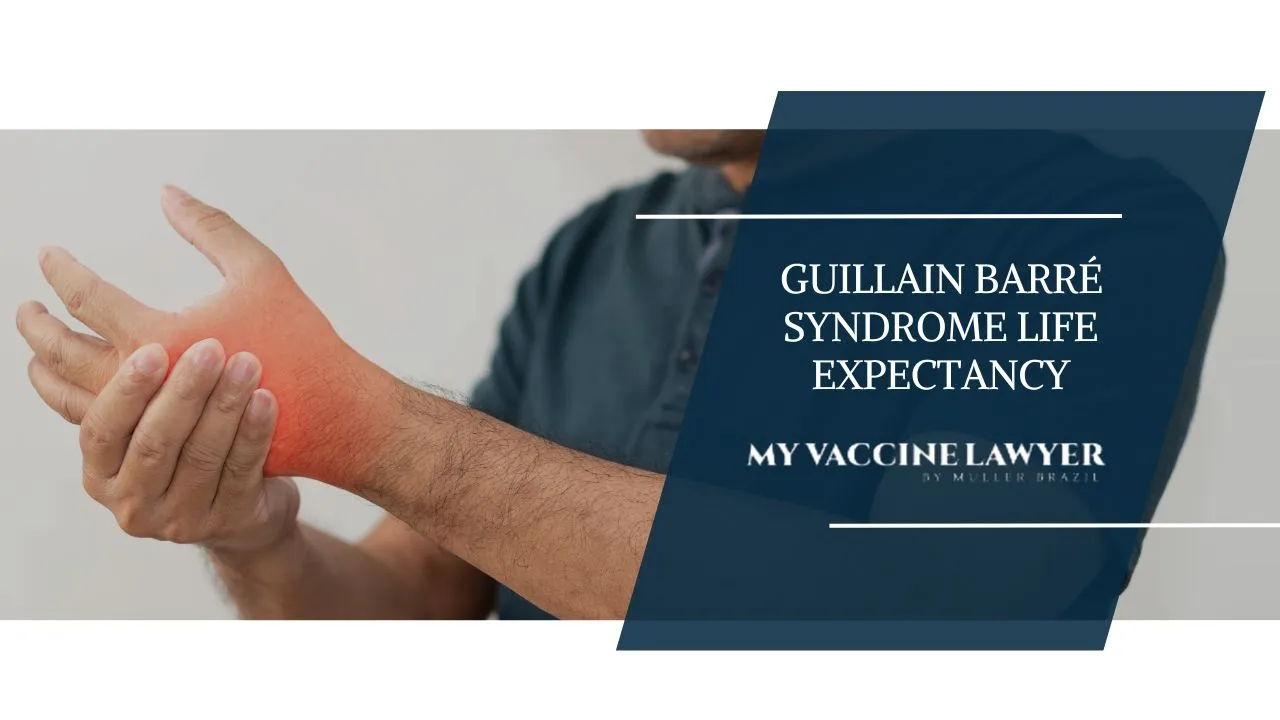Allergic Reaction to a Shot: Symptoms, Risks, and Legal Help Explained
Living with Chronic Inflammatory Demyelinating Polyneuropathy (CIDP), a rare autoimmune disorder, can be life-altering.
7 min read
Vaccine Injury Law Resources / Vaccines / Understanding Guillain-Barré Syndrome Life Expectancy
 Max Muller
:
Dec 7, 2023 12:43:00 PM
Max Muller
:
Dec 7, 2023 12:43:00 PM
Guillain-Barré Syndrome life expectancy depends on disease severity, treatment, and the rights vaccine injury patients pursue through legal claims.
Guillain-Barré Syndrome can appear without warning. One day a person feels healthy, and within hours the immune system attacks the peripheral nerves, leaving them with rapid onset muscle weakness that climbs through the upper body. In severe cases, GBS patients face respiratory failure, cardiac arrest, or autonomic dysfunction during the acute phase. Families search urgently for answers, and the first question is often about Guillain-Barré Syndrome life expectancy.
The truth is that most people with barré syndrome survive and go on to live a normal life expectancy. Mortality rates hover around 2% during the acute phase, rising to about 5% at two to five years, and close to 8% at a decade. Those who recover may still live with incomplete recovery, mobility aids, or long-term weakness.
When Guillain-Barré Syndrome is vaccine caused, often linked to seasonal influenza vaccination, Tdap, or COVID-19 shots, those complications create more than medical challenges. They bring financial and legal challenges that fall under the Vaccine Injury Compensation Program, where My Vaccine Lawyer represents GBS patients and their families in federal claims to demand award compensation for the harm caused.
Guillain-Barré Syndrome life expectancy depends on how severe the disease becomes in the first weeks. In the acute phase, about 2% of GBS patients die, most often from respiratory failure or complications such as pneumonia or cardiac arrest. Over the longer term, mortality rises to about 5% at two to five years and around 8% at ten years. These numbers show that while GBS can be life-threatening, the majority of patients survive and eventually return to a normal life expectancy.
The real challenge is recovery. About one in three patients never regain full muscle strength and live with incomplete recovery, sometimes relying on mobility aids or physical therapy to stay independent. For those whose Guillain-Barré Syndrome was vaccine caused, these long-term effects are central to federal claims. The Vaccine Injury Compensation Program considers disease severity, residual disability, and the costs of ongoing supportive care when awarding compensation.
At My Vaccine Lawyer, we fight to show how these outcomes affect daily life and demand compensation that covers both immediate and future needs.
Doctors measure Guillain-Barré Syndrome disease severity using clear prognostic factors. The most serious risks for GBS patients include respiratory failure that requires a ventilator, cranial nerve involvement that affects breathing and swallowing, and autonomic dysfunction that disrupts blood pressure and heart rhythm. Severe muscle weakness and rapid progression of symptoms within just a few days also point to a poorer outcome.
For vaccine injury cases, these clinical features are not only medical concerns, they are legal ones. A patient who develops cardiac arrest or needs months of ventilator support faces high medical bills, lost wages, and long-term care expenses. In federal claims, these details determine the value potentially given in compensation.
Many families live with lasting weakness or disability after a covered vaccine. My Vaccine Lawyer builds cases that show those realities in detail and demands compensation that matches the true cost of Guillain-Barré Syndrome.
Treatment plays a major role in how Guillain-Barré Syndrome affects life expectancy. Most GBS patients receive IVIg treatment or plasma exchange, both remove or block harmful antibodies that attack the peripheral nervous system. These treatments are most effective when started early in the acute phase and hopefully shorten the disease course or prevent severe complications.
Costs add another layer. A single course of IVIg treatment runs between $20,000 and $40,000, depending on body weight and hospital setting. Plasma exchange is often priced per session and may require several treatments, totaling $25,000 to $50,000 or more. Supportive care, such as time in intensive care, ventilator use, and rehabilitation, can push expenses into the six-figure range.
While treatments improve prognosis, they don’t erase the financial and physical burden. Some patients recover fully within a few weeks, while others face incomplete recovery even after months of therapy. These differences in outcome and cost shape how prognosis is discussed by doctors and later how the long-term impact is considered in compensation claims.
Guillain-Barré Syndrome appears in different forms, including Acute Inflammatory Demyelinating Polyneuropathy (AIDP), Acute Motor Axonal Neuropathy, and Miller Fisher Syndrome. Each subtype affects the body differently, but what truly matters for families is how those clinical features shape recovery, disability, and long-term costs.
A GBS patient who develops respiratory failure and spends weeks on a ventilator may leave the hospital with bills well into the six figures. Add to that the cost of physical therapy, mobility aids, and lost wages from months away from work, and the financial impact can become overwhelming. Under the Vaccine Injury Compensation Program, claims for severe cases often result in awards that cover:
Medical expenses: hospital bills, IVIg treatment or plasma exchange, rehabilitation, mobility aids.
Lost income: wages lost during recovery or, in poorer outcome cases, permanent loss of earning capacity.
Pain and suffering: capped at $250,000 but a standard part of every vaccine injury award.
Death benefits: up to $250,000 paid to families in the rare cases where barré syndrome proves fatal.
When GBS patients face incomplete recovery or permanent disability, total compensation can reach several hundred thousand dollars, sometimes more, depending on age, severity, and long-term needs. This is how medical outcomes, such as autonomic dysfunction or severe muscle weakness, are translated into financial recovery for families.
Most GBS patients survive the acute phase and can expect a normal life expectancy. The difference comes in the recovery period. Some people regain muscle strength in just a few weeks, while others spend years working through physical therapy and supportive care. About 60% reach a full recovery within one year, but 20–30% live with incomplete recovery, facing mobility issues, speech therapy needs, or long-term disability.
For vaccine injury claims, these recovery outcomes carry weight. A young patient who returns to work within months has different financial losses than an older patient who never regains independence. The Vaccine Injury Compensation Program recognizes this by awarding compensation for:
Long-term medical care — rehabilitation, pain management strategies, and ongoing supportive care.
Mobility aids and home modifications — costs often exceeding tens of thousands of dollars.
Loss of income or future earning capacity — particularly in severe disease cases with poorer outcomes.
This is why prognosis matters not only for doctors but also for claims. Prognostic factors that point toward incomplete recovery directly translate into larger compensation awards. Families should see these long-term recovery patterns not just as medical facts, but as part of the financial recovery they may pursue through federal claims.
What you can recover. The Vaccine Injury Compensation Program pays for three main buckets:
1) all unreimbursed past and future medical expenses
2) lost income and loss of earning capacity, and
3) pain and suffering up to $250,000.
A death benefit of $250,000 is available in fatal cases. Reasonable attorneys’ fees are paid by the Program separately, even when a petition is dismissed if it was filed in good faith.
When GBS gets the presumption. For seasonal influenza vaccines, Guillain Barré Syndrome that begins 3 to 42 days after vaccination qualifies for a Table presumption. Meet the timing and definition and causation is presumed unless another cause is proven. That presumption streamlines compensation and often shortens litigation.
Those claims are handled in the Countermeasures Injury Compensation Program (CICP), not VICP. CICP pays unreimbursed medical expenses, limited lost income, and a set death benefit. It does not pay pain and suffering and does not pay attorneys’ fees. The filing deadline is generally 1 year from administration.
For VICP: file within 3 years of the first symptom in injury cases, or within 2 years of death and within 4 years of first symptom in death cases. These deadlines are statutory. Missing them usually ends the claim.
Strong files usually include:
Onset in the 3–42 day window after a seasonal influenza vaccination.
A neurologist’s diagnosis consistent with current diagnostic criteria and clinical features of GBS.
Objective testing that ties to standard practice, such as cerebrospinal fluid protein elevation on spinal tap and nerve conduction study findings, plus a clear medical history timeline. These documents anchor causation and quantify damages.
Severe case, ventilated in ICU, persistent weakness. Medical bills and rehab measured in six figures, extended wage loss, long-term therapy and mobility equipment, plus $250,000 pain and suffering. Total awards can reach the high six figures when future care and income loss are substantial. Category availability and caps come from statute and court rules; exact numbers depend on proof.
Moderate case, hospitalized, returns to work with limitations. Covered medical expenses, several months of wage loss, and pain and suffering up to the statutory max if justified.
Fatal case. The estate receives the $250,000 statutory death benefit plus covered funeral and medical costs that meet program rules.
File in the U.S. Court of Federal Claims. HHS medical staff reviews and issues a preliminary recommendation. DOJ files its report. A court-appointed special master decides entitlement and sets compensation. If compensation is awarded, HHS pays from the trust fund.
Most GBS patients ultimately return toward a normal life expectancy. Where the law moves the needle is on the economic footprint of the acute phase and any incomplete recovery that follows. That footprint is exactly what VICP pays, and it is where a strong record and timely filing create leverage.
Hospital admission notes showing acute onset or rapid progression of GBS symptoms.
Neurologist’s diagnosis consistent with current diagnostic criteria and clinical features of Guillain-Barré Syndrome.
Spinal tap (cerebrospinal fluid) and nerve conduction study results confirming nerve damage.
Documentation of respiratory failure, ventilator use, or autonomic dysfunction if present.
Proof of the seasonal influenza vaccination or other covered vaccine.
Exact date of vaccination and the first symptoms (to confirm the 3–42 day Table presumption window).
Any prior medical history or conditions that could be relevant to causation.
Hospital bills, IVIg treatment or plasma exchange invoices, and rehabilitation costs.
Receipts for mobility aids, home modifications, or long-term supportive care.
Employer records showing lost wages or reduced earning capacity.
Notes on daily limitations — speech therapy, physical therapy, or pain management strategies.
Having these items ready does not guarantee compensation, but it gives your legal team a complete picture of prognosis, disease severity, and the costs tied to your case.
Guillain-Barré Syndrome life expectancy is often normal, but when the condition follows a vaccination, the costs and complications reshape a family’s future. Federal law created the Vaccine Injury Compensation Program to cover those losses, but success depends on presenting the right medical records, proving causation, and calculating long-term needs.
My Vaccine Lawyer focuses exclusively on these cases. Our attorneys know how to turn medical files into strong claims, argue before the special masters, and demand full award compensation for GBS patients. If you or a loved one developed Guillain-Barré Syndrome after a vaccination, contact My Vaccine Lawyer today to start your claim.
Mr. Muller currently devotes the majority of his law practice to aggressively fighting for the victims of unsafe drug and medical device injuries, as well as vaccine injuries and vaccine reactions involving the flu shot, TDaP/DTaP vaccine, and more. He has handled hundreds of SIRVA injury cases (shoulder injury related to vaccine administration), especially those involving bursitis, tendonitis, frozen shoulder, and rotator cuff tears. Mr. Muller also handles cases where vaccines caused serious nerve injuries such as Guillain-Barre Syndrome. Mr. Muller has recovered millions of dollars in compensation for his clients in the Vaccine Injury Compensation Program.

Living with Chronic Inflammatory Demyelinating Polyneuropathy (CIDP), a rare autoimmune disorder, can be life-altering.

When faced with neurological symptoms, distinguishing between ADEM and MS can be of utmost importance for appropriate treatment and management.

Guillain-Barre Syndrome (GBS) can cause serious breathing problems, which might require machines to help patients breathe. This condition affects a...
